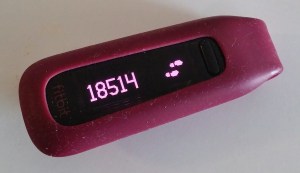I haven’t posted for a long time, but I just had the sudden urge to write. I’ve officially been fasting every day for a year now, the majority of which has been for 19.5 hours daily (9pm – 4:30pm). I don’t see myself ever going back to a more “normal” eating pattern. When people find out that I fast every day for so long (usually because I don’t eat at work), most of them are intrigued and ask questions. I thought I’d post some of the questions I’m asked most frequently and how I answer them.
“Don’t you get hungry?”
This is almost always the first question. Sometimes I do, but only for very brief periods (like five or 10 minutes) that quickly pass. I consume the number of calories appropriate to my fitness goals (whether it be muscle gain or fat loss) in my 4.5-hour eating window at the end of the day, which I believe my body is processing through a good portion of the period during which I’m fasting and that helps limit hunger. I drink two cups of coffee each day as well, which definitely helps reduce pangs.
“How do you stay awake and how do you think clearly?”
I’m way more awake and clear-headed during my fasted period. When I begin eating food (particularly carbohydrates i.e. rice, potatoes and oats at the end of the day), I become palpably groggy and sluggish. That’s good because it helps me go to sleep, but only when I want to go to sleep. I’ve learned to use carbs like some people use Ambien. Only difference is that the carbs are natural, while Ambien is a scary chemical monster.
“Doesn’t eating so much right before bed make you fat?”
Clearly no. Not only have I found no academic literature demonstrating causality between eating right before bed and getting fat, but I also happen to finish eating literally a few minutes before going to bed every night and it has absolutely no effect on fat gain. Energy balance is still king. I also have a 50% bro-science theory that the body can more efficiently digest food when it doesn’t have to divert energy into doing other stuff like moving around, talking, thinking etc.
“Doesn’t your metabolism slow down?”
No. There are mountains of peer-reviewed studies in well respected medical journals clearly demonstrating that the metabolism of a healthy individual (human) doesn’t slow until somewhere in the three-day fasting range. My own experience is the best proof for me, and I see no hint whatsoever that my metabolism is slowing. In fact, my hair and nails have been growing noticeably faster since I began fasting, which is an indicator of a faster metabolism.
“How can you possibly build muscle without eating for so long?”
Technically, my fasting isn’t absolute; I do take BCAAs (branched chain amino acids) during my fasting period: ten grams spread out during and immediately after lifting, then another ten grams a few hours later. It works out to 80-100 calories (BCAA is technically protein, so it’s 4 cal/ gram). It’s the one supplement that without question has a direct effect on my rate of muscle growth. When I began fasting, I took BCAAs according this schedule, but after a few months of doing it, dropped the second serving out of a combination of forgetfulness and believing they weren’t necessary (I think I even mentioned that in a past post). I maintained a six-day heavy compound lift schedule and maintained my total daily caloric intake, but my gains slowed dramatically. I chalked it up to the body’s natural adaptive response (sort of a foolish idea looking back). But nearly four weeks ago after reading more about the importance of BCAAs while fasting, I reintroduced the second serving of BCAAs into my routine, and sometimes also a third smaller serving around 2pm. I changed nothing about my lifting or caloric intake other than the extra 40 or so calories that came from the added aminos. It’s no exaggeration to say that it was like flipping on the muscle and strength switch. Every single one of my big lifts has increased (working max on the deadlift by 6% and a whopping 11% on the back squat in just four weeks), and I’ve visibly added muscle. My wife noticed, some coworkers noticed, and my clothing is tighter in the right spots. I’m not a big fan of supplements (aside from creatine monohydrate, fish oil, whole food multi and vitamin D), but I strongly believe in the power of BCAAs for gains while fasting. I don’t think they’d be worth it if I wasn’t fasting since I’d be eating real food and getting a similar effect. The hypertrophy signaling power specifically of the BCAA leucine has received a good deal of attention in the bodybuilding community recently, and, based on my own experience, it’s definitely not just hype.
“How do you have any energy to lift heavy without food?
I eat a lot at night and lift early in the morning during a time when I believe my body is still processing all that food from the night before. I have more energy lifting fasted than I ever had lifting after eating a traditional breakfast. I’ve begun referring to it as “clean” energy in that blood sugar levels are stable and there’s very little circulating insulin. As long as I’ve consumed enough complex carbs the prior night, I have a ton of energy, which can probably be attributed to good muscle glycogen levels. I’ve heavily experimented with both carbohydrate loading and restriction, and have found that my strength and stamina decreases noticeably when I’m restricting, even when keeping total daily calories constant.
As an aside, I see no point to carb restriction other than for vanity’s sake. Yes, a high carb intake (200-300g/ day for me) tends to blur the abs a little and cloaks deltoid striations as a result of some fluid retention, but it’s such a great boon to strength development that I don’t care. My perception is that a common belief is that carbs cause fat gain. I think people tend to mistake the associated water retention with fat gain. It’s also why people drop weight like mad for a week or so on low carb diets. Most of that is just water. I don’t think there’s any way to have it both ways; it’s just not possible for a TRAINED individual to continue to make strength and size gains on a low-carb or calorie restricted diet. That kind of diet is great for getting ripped, but not stronger.
“Why do you fast? What’s the point?”
All said, fasting makes it much easier for me to control my calories, it improves my focus, it’s easy and convenient (no thinking about what food to bring to work, no lunch prep) and it’s vastly improved my understanding of how my body works. It’s special to me and always with me. I’ve become preternaturally aware of specific foods’ effects on how I feel. For example, I’ve learned to break each day’s fast with some meat (both fatty and lean), cheese and fruits and vegetables rather than something higher in carbohydrate because carbs absolutely, positively make be feel like I’ve been sprinkled with sleepy dust. Not a bad thing at all–just not good when I’m not ready to sleep.




